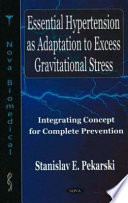Very relatable. Same issue with forearms. I had always wondered whether this is really just genetics as commonly believed or if there is an alternative explanation.
Navigation
Install the app
How to install the app on iOS
Follow along with the video below to see how to install our site as a web app on your home screen.
Note: This feature may not be available in some browsers.
More options
-
By using this site you agree to the terms, rules, and privacy policy.
-
Charlie's Restoration Giveaway #2 (Entire Home EMF Mitigation & Protection Along With Personal Protection) - Click Here To Enter
-
Dear Carnivore Dieters, A Muscle Meat Only Diet is Extremely Healing Because it is a Low "vitamin A" Diet. This is Why it Works so Well...
Rest the rest of this post by clicking here
-
The Forum is transitioning to a subscription-based membership model - Click Here To Read
Click Here if you want to upgrade your account
If you were able to post but cannot do so now, send an email to admin at raypeatforum dot com and include your username and we will fix that right up for you.
You are using an out of date browser. It may not display this or other websites correctly.
You should upgrade or use an alternative browser.
You should upgrade or use an alternative browser.
Calf raises better than meds to lower blood sugar levels and increase metabolism
- Thread starter Elie
- Start date
Dad bods are underrated. So is their health.
BRMarshall
Member
- Joined
- Sep 12, 2018
- Messages
- 237
Very Good!This is super interesting. Stanislav Pekarski wrote a book called "Essential hypertension as adaptation to excess gravitational stress." In it, he argues that humans are prone to hypertension because being bipedal can create large pressure gradients between our feet, heart, and heads when we are standing or sitting. As a result, hypertension can develop to ensure enough pressure to get blood to our brains.
Luckily, the soleus muscles work like a second heart and can help pump blood back up the body. But they only work when they are activated. If you read the full research report for this study, the authors explain how walking does stimulate these soleus muscles (albeit to a lesser extent than the Soleus push-up, they claim), but the blood glucose benefits end pretty shortly after you stop walking. So unless you have a treadmill desk, it's pretty much impossible to activate the soleus muscles enough during the office workday. This is why they had the subjects do the low-intensity soleus push-ups for so many hours each day. According to the study, the activated soleus muscles keep using blood glucose for energy and don't fatigue.
Putting that book and this article together, this is my theory: When we used to be active most of the waking day, our soleus muscles were constantly working, and we got the benefit of lower blood pressure and blood glucose levels. In our current sedentary environment where we're not continually activating our soleus muscles, our blood glucose stays elevated because the soleus muscles are not siphoning glucose out of the blood and our blood pressure increases because the soleus muscles are not pumping blood back up the body.
Essential Hypertension as Adaptation to Excess Gravitational Stress
Spaceflight studies have demonstrated that adaptation to gravitational stress after prolonged microgravity includes sympathetic activation, water retention, and arterial pressure increase, i.e. a process very similar to development of essential hypertension, which from this perspective looks...
books.google.com
I bought this calf strap and corresponding app game to measure and remind me to keep doing soleus pushups during the work day.
Amazon product ASIN B09CHHZXWLView: https://smile.amazon.com/gp/product/B09CHHZXWL/ref=ppx_yo_dt_b_asin_title_o00_s00?ie=UTF8&psc=1
Amazon product ASIN B09CHHZXWLView: https://smile.amazon.com/gp/product/B09CHHZXWL/ref=ppx_yo_dt_b_asin_title_o00_s00?ie=UTF8&psc=1
username
Member
- Joined
- Nov 17, 2020
- Messages
- 89
I find this very interesting and would like to see more discussion around this.
P
Peatness
Guest
This study says it's caused by prolonged sitting. I was told my hypertension was essential. Exercise, including prolonged walking, did nothing to lower it. For some reason I can't access that book you linked.Very Good!

Essential Hypertension as Adaptation to Excess Gravitational Stress
Spaceflight studies have demonstrated that adaptation to gravitational stress after prolonged microgravity includes sympathetic activation, water retention, and arterial pressure increase, i.e. a process very similar to development of essential hypertension, which from this perspective looks...books.google.com

A gravitational hypothesis of essential hypertension as a natural adaptation to increased gravitational stress caused by regular, prolonged sitting typical of modern life - PubMed
Essential hypertension may be explained as adaptation to increased gravitational stress caused by regular, prolonged sitting. This gravitational hypothesis of essential hypertension, supported by clinical data, offers a way to its complete healing through elimination of the primary factor of...
Background: Spaceflight studies have demonstrated that adaptation to increased gravitational stress after prolonged microgravity includes sympathetic activation, water retention, and arterial pressure increase, i.e. is very similar to essential hypertension, which looks like an advanced stage of adaptation to a further increase in gravitational stress.
Material/methods: Theoretical analysis and literature review were performed to develop an hypothesis of essential hypertension as adaptation to increased gravitational stress associated with prolonged sitting.
Results: Gravitation shifts blood downwards, and gravitational stress (GS) on the cardiovascular system in an upright position may be defined as the amount of work necessary to return the blood upwards and maintain adequate upper-body circulation calculated as the product of the gravitational potential (Ugr=g*h) and the mass of blood moved: GS =Ugr*Mshift. In a complex vascular network, this blood shift is actually a function of time, estimated in a first approximation as Mshift(t)=(Ugr*t)/Rd (Rd: the resistance to downward blood flow). Thus, gravitational stress is proportional to the time spent upright GS=Ugr*Mshift(t)=(Ugr2*t)/Rd=(g2*h2*t)/Rd. From this analysis, regular, prolonged sitting typical of modern life should cause a significant increase in gravitational stress on the cardiovascular system, requiring advanced antigravitational response with sympathetic hyperactivity, vasoconstriction, volume overload, and arterial hypertension. The hypertensive effect of prolonged sitting has been demonstrated in clinical studies.
Conclusions: Essential hypertension may be explained as adaptation to increased gravitational stress caused by regular, prolonged sitting. This gravitational hypothesis of essential hypertension, supported by clinical data, offers a way to its complete healing through elimination of the primary factor of prolonged sitting.
cjm
Member
Could this simple "exercise" done seated have such a profound impact on sugar and lipid metabolism?
‘Special’ Muscle Can Promote Glucose and Fat Burning to Fuel Metabolism for Hours While Sitting - Neuroscience News
This is super interesting. Stanislav Pekarski wrote a book called "Essential hypertension as adaptation to excess gravitational stress." In it, he argues that humans are prone to hypertension because being bipedal can create large pressure gradients between our feet, heart, and heads when we are standing or sitting. As a result, hypertension can develop to ensure enough pressure to get blood to our brains.
Luckily, the soleus muscles work like a second heart and can help pump blood back up the body. But they only work when they are activated. If you read the full research report for this study, the authors explain how walking does stimulate these soleus muscles (albeit to a lesser extent than the Soleus push-up, they claim), but the blood glucose benefits end pretty shortly after you stop walking. So unless you have a treadmill desk, it's pretty much impossible to activate the soleus muscles enough during the office workday. This is why they had the subjects do the low-intensity soleus push-ups for so many hours each day. According to the study, the activated soleus muscles keep using blood glucose for energy and don't fatigue.
Putting that book and this article together, this is my theory: When we used to be active most of the waking day, our soleus muscles were constantly working, and we got the benefit of lower blood pressure and blood glucose levels. In our current sedentary environment where we're not continually activating our soleus muscles, our blood glucose stays elevated because the soleus muscles are not siphoning glucose out of the blood and our blood pressure increases because the soleus muscles are not pumping blood back up the body.
@username
I didn't see anyone post the original study, which is conveniently linked in the OP link, so here it is:
A potent physiological method to magnify and sustain soleus oxidative metabolism improves glucose and lipid regulation
"Singular movement targeting the 1 kg soleus easily sustains oxidative metabolism"
Here's a soleus exercise I can't recommend enough (timestamped to 1:56):
View: https://youtu.be/3jTwNTm1EBE?si=0t0dZypESLANXMll&t=112
Screenshots:
Last edited:
EMF Mitigation - Flush Niacin - Big 5 Minerals
Similar threads
- Replies
- 19
- Views
- 6K
- Replies
- 2
- Views
- 3K
- Replies
- 117
- Views
- 9K
- Replies
- 3
- Views
- 1K
- Replies
- 9
- Views
- 2K
- Replies
- 121
- Views
- 37K
- Replies
- 14
- Views
- 5K
